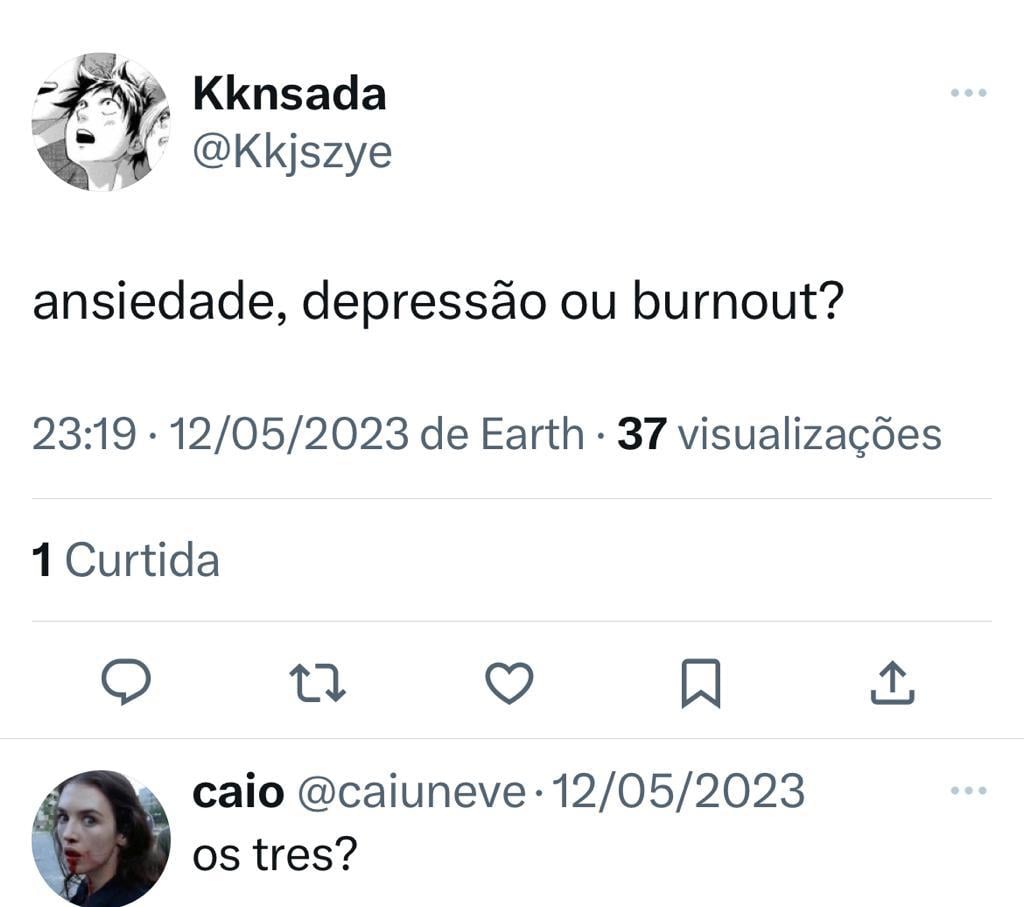We have already explained it here on Curto News what is it Burnout: a disease that is associated with burnout at work, and can be confused with anxiety and even depression, because they have similar symptoms. And this question always appears on social media:
ADVERTISING



What is anxiety and when does it become a disorder?
According to a National Institute of Mental Health, occasional anxiety – that butterflies in your stomach, a certain agitation that you confuse with fear and joy when something is about to happen – is a normal part of life. Life is full of questions regarding health, money or family problems. But anxiety disorders involve more than temporary worry or fear. For people diagnosed with an anxiety disorder, this feeling doesn't go away and may worsen over time. Symptoms can interfere with daily activities, such as job performance, schoolwork, and relationships.
There are several types of anxiety disorders, including generalized anxiety disorder, panic disorder, social anxiety disorder, and various phobia-related disorders.
How to differentiate between anxiety and Burnout?
“Anxiety can have several triggers and one of them could even be stress or work overload, but what differentiates anxiety from Burnout is that the latter is a situation of very intense emotional change. It usually brings symptoms of anxiety, but the person also has changes in mood and sleep, triggered by excessive stress related to work”, explains psychiatrist Eliseu Labigalini Júnior.
ADVERTISING
According to the expert, work can also be a “stressful” agent, generating anxiety, which is why people have so much difficulty understanding when it is one case and when it is another.
In brunout, some of the physical symptoms are the same as those of anxiety disorders, such as feeling tired, lacking energy, irritable, sad or anxious.
Elissa Epel, professor in the department of psychiatry and behavioral sciences at the University of California, San Francisco, author of the book “The Stress Prescription: Seven Days to More Joy and Ease”, also helps distinguish anxiety, depression and brunout.
ADVERTISING
“The person may also develop a feeling of hopelessness about their role and effectiveness and feel that things will never change at work. And this parallels depressive thinking, where we feel hopeless and don't see any light at the end of the tunnel,” she explains.
Depression, however, according to the expert, generally focuses on oneself: the sufferer feels worthless or self-critical. While the Burnout is centered on “unsustainable chronic stress from the demands of work, be it unpaid work at home, as a carer, or the demands of your day job.”
If you have been experiencing any of these symptoms, the most important thing is to see a psychiatrist and get an evaluation!
ADVERTISING
@curtonews Is it anxiety or burnout? Conditions have similar symptoms, but the cause is different.
♬ original sound – Curto News
Read also
Receive news and newsletters do Curto News by Telegram e WhatsApp.




